
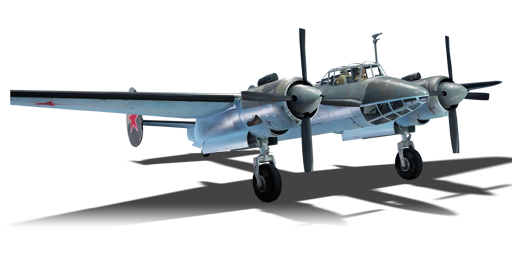


The Tu-2S-59 is a Soviet bomber. It was introduced in Update 1.29.
The Tu-2S-59 is an extremely versatile ground attacker, with a moderate payload better suited for destroying ground targets than bases. Although the tactics are different for arcade battles, in Realistic, the plane should be flown quite aggressively. It is recommended to equip the 9 FAB-100M-43 bombs (if the modules haven't been acquired yet) in order to destroy as many armoured foes as possible. Additionally, use a two-second bomb delay to allow ample time to escape the blast radius.
The defining feature of the Tu-2S-59 is its single defensive 20 mm cannon in place of the 12.7 mm machine gun found on the two older models. Other than that, there isn't much difference between this and the older Tu-2S and Tu-2S-44. See above for battle tactics.
flaps
flaps
flaps
brake
| Belt | Belt filling | Armor penetration (mm) at a distance: | |||||
|---|---|---|---|---|---|---|---|
| 10 m | 100 m | 500 m | 1000 m | 1500 m | 2000 m | ||
| FI-T/AP-I | 28 | 24 | 14 | 7 | 4 | 2 | |
| FI-T/HEF/AP-I/FI-T | 28 | 24 | 14 | 7 | 4 | 2 | |
| HEF/FI-T/AP-I | 28 | 24 | 14 | 7 | 4 | 2 | |
| FI-T | 3 | 3 | 3 | 3 | 3 | 3 | |
| AP-I/FI-T/AP-I/AP-I | 28 | 24 | 14 | 7 | 4 | 2 | |
| AP-I/HEF/HEF/FI | 28 | 24 | 14 | 7 | 4 | 2 | |
| Belt | Belt filling | Armor penetration (mm) at a distance: | |||||
|---|---|---|---|---|---|---|---|
| 10 m | 100 m | 500 m | 1000 m | 1500 m | 2000 m | ||
| FI-T/HEF | 3 | 3 | 3 | 3 | 3 | 3 | |
| AP-I/FI-T/AP-I | 28 | 24 | 14 | 7 | 4 | 2 | |
| FI-T/HEF/HEF-I | 4 | 4 | 4 | 4 | 4 | 4 | |
| Belt | Belt filling | Armor penetration (mm) at a distance: | |||||
|---|---|---|---|---|---|---|---|
| 10 m | 100 m | 500 m | 1000 m | 1500 m | 2000 m | ||
| T/AP/AP/IAI | 32 | 30 | 22 | 15 | 11 | 7 | |
| API-T/AP/AP/AP-I(c) | 34 | 32 | 24 | 17 | 12 | 8 | |
| API-T/AP-I | 29 | 27 | 20 | 13 | 9 | 6 | |
| Name | Weight | Slot | ||||||
|---|---|---|---|---|---|---|---|---|
| 226 kg |  |  | ||||||
| 255 kg | 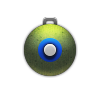 |  | ||||||
| 468.6 kg | 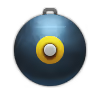 |  |  | |||||
| 510 kg | 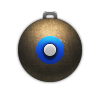 |  |  | |||||
| 1,077 kg | 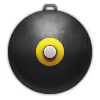 |  |  | |||||
| 1,012 kg | 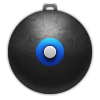 |  |  | |||||
| 9 × | 931.5 kg | 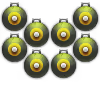 | ||||||
| 2 × | 451.9 kg | 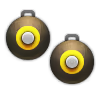 | ||||||
| 2 × | 510 kg | 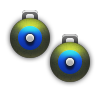 | ||||||
| 4 × | 903.8 kg | 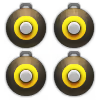 | ||||||
| 4 × | 1,020 kg | 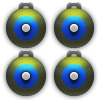 | ||||||












Flight performance | |
|---|---|
Weaponry | |
|---|---|